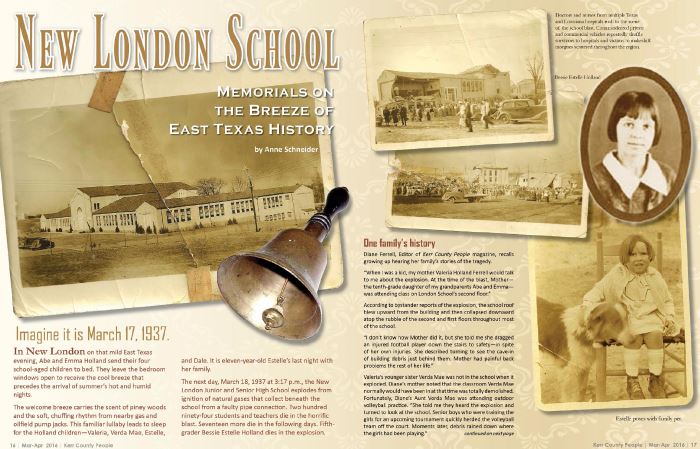| |
| |
Newspaper/Newsletter/Online |
|
|
|
|
|
|
1937 Headlines
• President Roosevelt restricts Japanese planes bomb and sink U.S.
• U.S. weapon trade with Japan.
• Gunboat Panary in Chinese waters.
• Nazi demonstrations taking place in Austria are supported by Hitler.
• 294 people are killed when an explosion destroys a building in New London Texas.
• The German airship Hindenburg is destroyed by fire in New Jersey.
• Technetium, the first manmade element is developed.
|
|
|
|
|
|
|
|
|
|
|
|
|
| |
|
|
| |
Within the Articles Section of this website
there are many
typos and misspellings contained within
the original articles. These Articles are unedited
to retain originality.
On rare occasions we have been refused
permission to reprint an article from a
newspaper. We regret the inconvenience to
our
visitors of this website, but respect the wishes of
the publisher(s). |
|
| |
|
|
|
|
|
| |
Kerr County People Magazine |
|
|
| |
|
|
| |
(Click graphic for Newsletter)
 |
|
| |
|
|
|
|
|
|
|
| |
|
|
| |
(Newspaper, date, and author unknown)
Boomtown prosperity set the stage for the London
school disaster. The legendary Texas oil
wildcatter, Dad Joinier, brought in a discovery
well on Daisy Bradford's farm in Rusk County in
1930. By 1936, the county's population ballooned
from a few hundred to a few thousand.
Companies punched holes everywhere. The oil
flowed. It didn't have to be pumped from the
ground.
The London School campus was a new showplace in
1937, the product of new oil wealth that could
not have been imagined 10 years earlier. A
gymnasium, an auditorium and 10 other school
buildings, interspersed with playing fields, sat
surrounded by derricks, pipelines and temporary
camps for the oilfield workers.
The brick high school building, capped with red
tile roof, was the centerpiece. It housed 650 to
700 children in grades 5 through 11. There was
no grade 12 back then. At the time, the London
School district was said to be the richest in
the United States.
A commercial utility company had been supplying
natural gas to heat the school at a cost of
$3000.00 a year. To save money, school officials
made a change.
They tapped into an oilfield gas line to get
free gas, which was a natural by-product of the
oil spurting from a well. It was a common
practice back then to do it that way. Homeowners
and businesses simply hooked to a oil well gas
line for free gas, the oil companies didn't
care. They had no use for the gas, and they
usually just flared off into the air.
After the explosion, one state inspector wrote
that school officials had meant well. "There was
no niggardly thought of saving, but a thrify
thought of not spending uselessly," H. Oram
Smith of the Texas Inspection Bureau wrote in
his report.
Mr. Smith concluded that the oil field gas was
more unstable than commercial gas. The pressure
was hard to regulate. Teachers and students had
tampered with the burners to adjust them and had
jostled pipes connected to the radiators. In
turn, he said this caused stress leaks in the
pipe couplings below the floor. "No one
individual was personally responsible," he
wrote. "It was the collective fault of average
individuals, ignorant or indifferent to the
precautionary measures, where they cannot, in
their lack of knowledge, visualize a danger or a
hazard."
The explosion killed an estimated 280+ students,
15 teachers, 2 visitors and a school secretary.
Researchers are still attempting to document the
exact number. Some the death toll was higher.
The explosion ranks as the third-worst disaster
of the 20th century in Texas. The Galveston
hurricane of 1900 killed 6,000 to 8,000. A
chemical explosion in Texas City, in 1947, took
more than 600 lives. |
|
| |
|
|
|
|
|
|
|
|
|